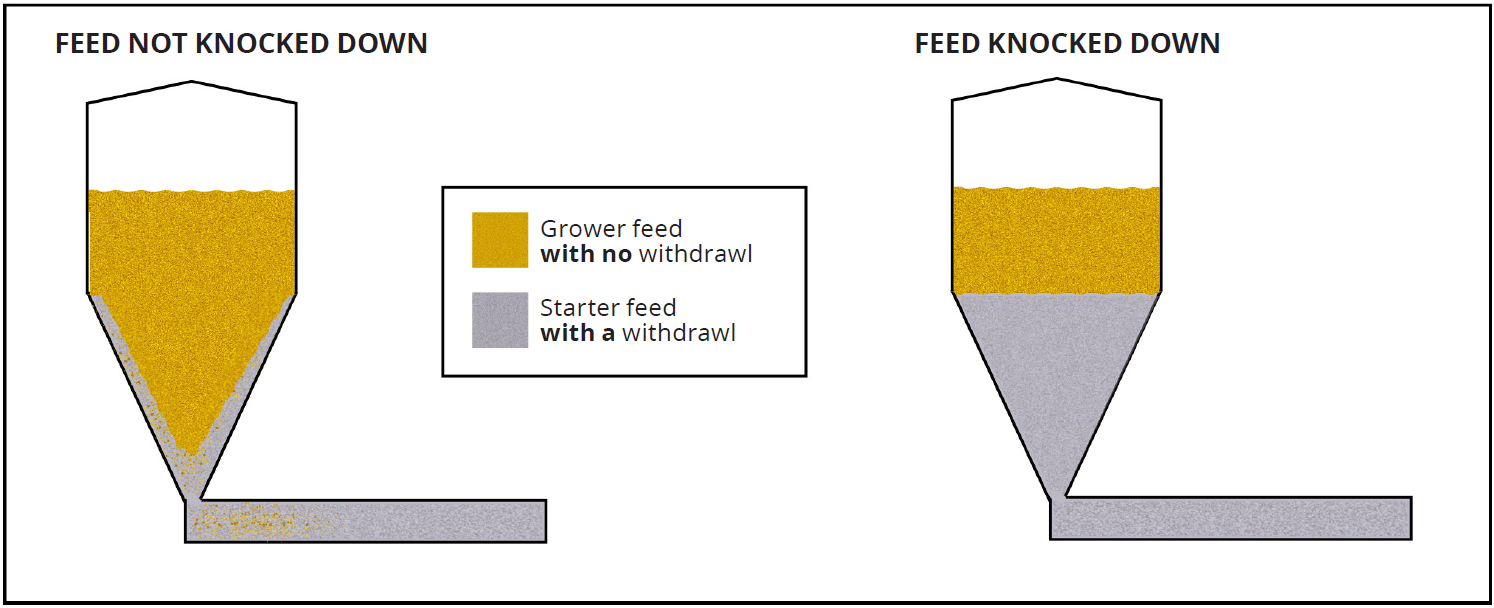The management of medicated feed in feed bins is a Critical Control Point in the Raised by a Canadian Farmer On-Farm Food Safety Program – proper feed bin protocols are a key step in the production cycle where control is essential to prevent a food safety hazard.
From a food safety perspective, it is important to limit the potential for medicated feeds with a withdrawal period mixing with other loads of feed and being fed to the flock at the wrong time. If this happens, the safe marketing date based on the withdrawal period could be extended unknowingly.
Therefore, proper feed bin management is critical to reduce the risk of antibiotic residues in the finished product.
Feed bin management for medicated feed with a withdrawal period:
- Medicated feed with a withdrawal period must be knocked down to the bottom of the feed bin prior to the delivery of the next ration.
- This can be done by using a rubber mallet or similar to knock the sides of the feed bin.
- Knock down the feed as close to the next delivery time as possible. This may be the night before the delivery, or a few hours before delivery time if possible.
- Farms with two bins can have even greater control by being able to fully empty the medicated feed with a withdrawal period in the first bin prior to switching over to the second feed bin.
- Don’t blend the two bins: If one bin has medicated feed with a withdrawal period and the other does not, or has a different medicated feed, the two should not be mixed.

Tips:
- Review your feed schedule to know when the feed with no withdrawal will be arriving. Check in with your feed company about which bin it should be placed in.
- If you have two bins, take advantage! Rations with no withdrawal can be fed out of one bin, keeping the other bin for any medicated feeds with a withdrawal period.
- If you need to add feed on top of another ration in the same bin, the knock down between rations is required when the first ration is medicated with a withdrawal period!
Bottom line: any mixing between a medicated feed with a withdrawal period and other rations must be minimized.
Antibiotic residues are monitored by the Canadian Food Inspection Agency; chicken has maintained an excellent track record – so let’s keep it up!
Click here for a pdf factsheet.



 Français
Français


